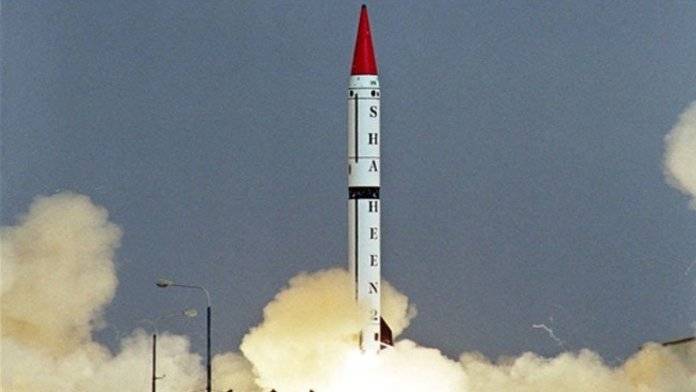Pakistan recently test-fired surface-to-surface ballistic missile, Shaheen III. Capable of carrying a nuclear warhead, the missile is estimated to have a maximum range of 2750 km. The missile is solid-fuelled and equipped with Post-Separation Altitude Correction (PSAC) system.
Chairman of the Joint Chiefs of Staff Committee Gen Nadeem Raza, who witnessed the test, said, "Pakistan desires peaceful co-existence in the region and its strategic capability is to deter any aggression against the sovereignty of Pakistan.” The successful test launch was also warmly appreciated by the President and Prime Minister Imran Khan who congratulated the scientists and engineers on achieving another outstanding milestone.
Pakistan is determined to scrutinize the strategic situation of the region where India is massively increasing its military forces. For Pakistan, such missile tests are an essential element for survival because of massive conventional disparities that lie between India and Pakistan. Also, it is a major step towards strengthening Pakistan’s deterrence capability vis-à-vis India.
Retention of such missile systems is vital for the regions as it will deny India any advantage. The variant of Shaheen III could serve best to give Pakistan the ability to target Andaman and Nicobar islands in Bay of Bengal. General Khalid Kidwai, former head of the Strategic Plans Division (SPD) and Advisor to Pakistan’s National Command Authority (NCA) in a conversation at the 2015 Carnegie International Nuclear Policy Conference, reiterated that the sole purpose of developing such missile system is to keep in range the bases which India is developing in Andaman and Nicobar. He further added that, "If those bases are not covered then inadvertently Pakistan will be allowing, so to say, a second strike capability to India within its land borders."
Interestingly, many stories emerged against this recent test. Anti-Pakistan propaganda machines criticized the test, whereas, Pakistan being a responsible state developed such capability solely to deter enemy's hostile intentions. Adam Smith, in his book wealth of nations said it very aptly, “The first duty of a state is to protect its society from injustices and violence of the other society/societies as it moves towards civilization. What good could be achieved from economy if the state fails to protect its sovereignty?
In South Asia, massive militarization and nuclearization of India was the compelling factor for Pakistan to opt for such missile systems. Pakistan is the prime target of India’s missile programme. India is constantly arraying a variety of missiles in the region for fulfilling its hegemonic designs.
There exists no debate on the Indian fast tracked missile testing. A look at what goes into conducting missile tests shows that India conducted 19 tests in 2020. It was reported that, from a period between 7 September to 9 October 2020, India’s missile testing fever counted to 12 missile tests. So, where does this missile fever stand and what it means in terms of strategic posturing?
Keen to become a global power at the cost of regional peace and stability, military modernization has been a top agenda for PM Modi. India has test-fired a number of missiles including ballistic, cruise and interceptor missiles. It has initiated its Ballistic Missile Defence System along with tests of Advanced Area Defence Interceptor and High-Altitude Interceptor missile.
India has also broken the UN's limits on its development of nuclear weapons and long-range ballistic missiles. Hence, it is not difficult for India to produce Intercontinental Ballistic Missiles which can cover the whole world. Keeping all this in mind, the Western countries continue to support India which is fuelling the missiles race in South Asia. As no one can ignore its security threats, hence, it may leave Pakistan with no option but to increase the range of its nuclear missiles.
While recognizing the challenges to South Asia’s strategic stability, it is evident that the development and deployment of India’s missiles has the potential to impact the complex geometry of deterrence, arms control, and crisis stability in the region. Hence, India’s pursuit of missile technology would bring new security challenges for Pakistan. The continued modernization of both ballistic and cruise missiles is imperative for the credibility of Pakistan's nuclear deterrence that ensures continued strategic stability in South Asia.






